At least two killed, 30 injured, in latest Russian attacks on Kharkiv
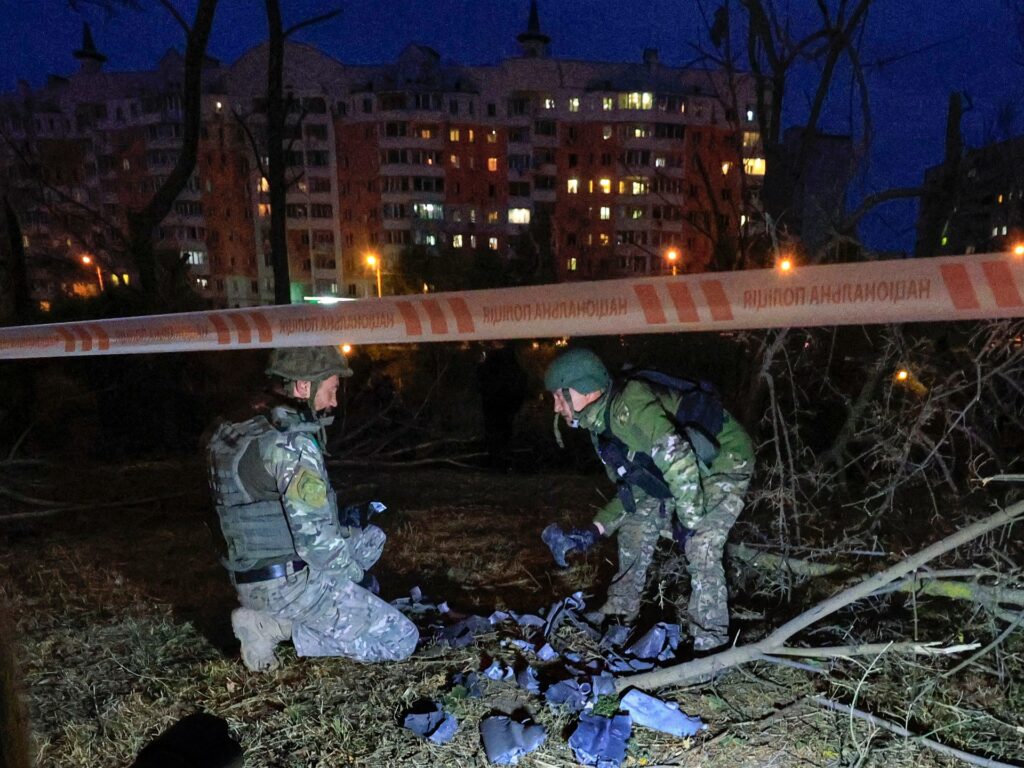
Northeastern city, the second biggest in Ukraine, has been a regular target for Russia since it began its full-scale invasion two-and-a-half years ago. Russian attacks on Kharkiv, Ukraine’s second-biggest city, have killed at least two people and injured more than 30, including a teenager. Russian forces dropped about four guided bombs on the northeastern city, about 30km (18 miles) from the border with Russia, on Tuesday afternoon, Governor Oleh Syniehubov said. One of the bombing attacks killed a man and a woman who were walking along the street, he said, adding that at least three other people were injured. An earlier attack injured 28 people, including a 16-year-old, Syniehubov said. The authorities were working to verify the type of weapon used in that incident. Syniehubov and Kharkiv Mayor Ihor Terekhov said a civilian production facility had been hit. Terekhov said there had also been a fire. Kharkiv has been a frequent target of Russian attacks since Moscow launched its full-scale invasion of Ukraine in February 2022. Last week, a Russian guided bomb attack on the city struck a five-storey apartment block, injuring 10 people. There were several attacks on the city in September. Three people were killed when a Russian guided bomb hit an apartment building as world leaders were due to meet at the United Nations in New York. And dozens were hurt after a Russian missile struck a shopping mall and a sports centre at the beginning of the month. Ukraine also reported that civilians were killed in Russian attacks on the south and east of the country on Tuesday. The head of the southern Zaporizhia region, Ivan Fedorov, said a 71-year-old man was killed in a drone attack as he travelled in his car in the village of Prymorske, which is on the Dnipro river south of the regional capital and close to the front line. A woman who was with him in the car was admitted to hospital, Fedorov said. In the east of the country, where the fighting is most intense, officials said that a Russian attack killed one person and injured six others in the town of Kostiantynivka. The head of the Donetsk region, Vadym Filashkin, said Moscow’s forces had dropped “three guided aerial bombs on the town, hitting two residential buildings”. Adblock test (Why?)
Where are the Israeli captives taken in the Hamas-led October 7 attack?
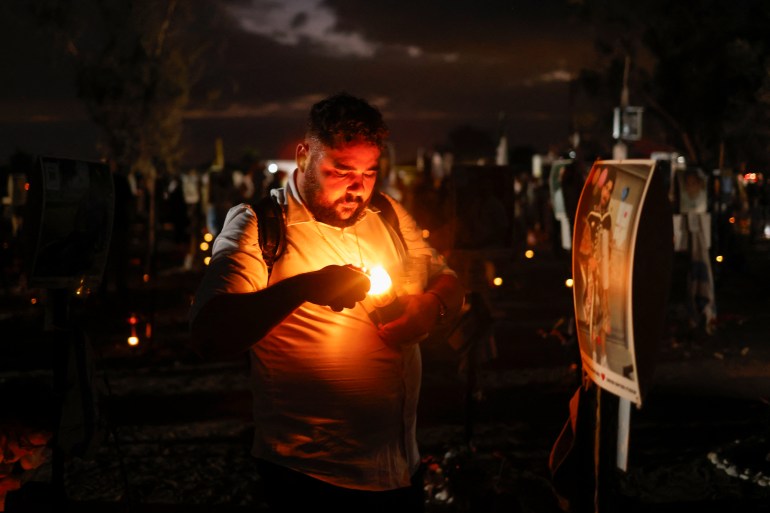
EXPLAINER Despite pressure to agree to a deal that would see captives released, Israeli PM Benjamin Netanyahu has not budged. It has been a year since the Hamas-led attack on Israel in which 1,139 people were killed and about 250 captured and taken to the Gaza Strip. Since October 7, 2023, Israel has killed more than 41,900 people in its genocide of the Palestinians in Gaza. Here’s what to know about what happened to the captives taken from Israel: What happened on October 7 last year? Palestinian armed groups led by Hamas’s armed wing attacked several areas in southern Israel. Israeli officials said 251 people were taken captive, including women, men, children and the elderly. Among them were 23 Thai nationals, one Nepali national and one Filipino national who were working or studying in Israel. Several were dual nationals. It is unclear how many of the captives hold dual citizenship. However, at least 15 of those released were from Mexico, Germany, Argentina, Ireland, the United States and South Africa. The US says 12 Americans were taken captive and seven are still in captivity. The captives were believed to have been taken to different locations in the Gaza Strip by fighters from different Palestinian groups. What happened to the captives? Nearly half the captives have been released. Others are still in captivity with some confirmed or feared dead. Israeli officials said 117 have been returned to Israel. Israeli and US officials say 101 people are still in Gaza. At least 33 bodies have been recovered by Israeli forces as of September 1, according to the Israeli government. Relatives and supporters of captives taken by Palestinian fighters on October 7, 2023, mourn at a memorial at the site of the Nova music festival on the first anniversary of the Hamas-led attack [John Wessels/AFP] Who did Hamas release? Some of the captives were unilaterally released by Hamas from October 20 to October 23, based on “humanitarian grounds”. Those released include: Natalie, 17, and Judith Tai Raanan, 59, (released on October 20) as well as Yochevid Lifshitz, 85, and Nurit Cooper, 79, (released on October 23). One hundred and five captives were released as part of a prisoner exchange mediated by the Qatari government from November 24 to December 1. They were 81 Israelis, 23 Thai workers and one person from the Philippines. In return, Israel freed about 240 Palestinians imprisoned in Israel, many of whom were minors and many more who had not been convicted of a crime. Within the first four days of the temporary ceasefire, Israel arrested more than 130 Palestinians in the occupied West Bank and East Jerusalem. Did Israel get any captives out of Gaza? Eight people have been rescued alive from Gaza by Israeli forces, often during heavy shelling that kills scores of Palestinians: On October 31, Israeli forces rescued a female soldier, 18-year-old Ori Megidish, from northern Gaza. On February 12, two Argentinian-Israeli men – Louis Har, 70, and Fernando Marman, 60 – were rescued in Rafah in a raid that reportedly killed 100 Palestinians. On June 8, Israeli soldiers killed more than 270 people and injured 700 in a raid to rescue four captives from the Nuseirat refugee camp: Noa Argamani, 25; Andrey Kovlov, 27; Shlomi Ziv, 40; and Almog Meir Jan, 21. One man, Kaid Farhan Elkadi, 52, was found in southern Gaza on August 24 by Israeli soldiers. Israelis chant during an antigovernment protest calling for the release of Israeli captives in front of the Israeli Ministry of Defence in Tel Aviv on September 28, 2024 [Jack Guez/AFP] Who’s still captive and alive? As of September 1, about 101 captives were believed to still be in Gaza, according to Israeli military spokesman Daniel Hagari. They include more than 30 people Israeli officials said are likely dead. On August 12, Abu Obeida, a spokesperson for Hamas’s military wing, the Qassam Brigades, confirmed that Hamas guards had killed a male captive and seriously wounded two female captives in separate incidents. On Monday, the Israeli group Hostages and Missing Families Forum said in a statement on X that officials informed the family of Idan Shtivi, a 28-year-old male captive, of his death. At least 33 bodies have been recovered, according to Israeli forces, including: Three captives who were killed by Israel on November 10 in an air raid that Israel said targeted a tunnel where Hamas commander Ahmed Ghandour operated. Officials initially denied Israel was responsible for the killings but admitted that it was “likely” last month. Three men who had escaped their captors and were killed by Israeli forces on December 15 in the Shujayea area of Gaza. The soldiers opened fire even though the three men waved white flags and spoke in Hebrew to the soldiers. Six captives who were found dead in a tunnel complex in Rafah on September 1. Hamas said they had been killed by Israeli bombs. Israel said they were shot by Hamas members. Irena Tati holds a picture of her grandson Alexander, held by Hamas in Gaza, at a demonstration to call for the release of the captives at the Museum of Art in Tel Aviv on December 2, 2023 [Ariel Schalit/AP Photo] What’s next? Despite pressure from families of the remaining captives to accept a ceasefire Hamas proposed that would see all of them freed, Israeli Prime Minister Benjamin Netanyahu is insisting that Hamas must release the captives before any ceasefire can be negotiated. Netanyahu has faced even more pressure from the families as Israel has widened its war by attacking Lebanon last week. Some accuse Netanyahu of not prioritising the captives but focusing instead on starting wars with Israel’s neighbours for political gain. A captive deal “has certainly fallen off the table when it comes to this government”, Al Jazeera’s Stephanie Dekker said. Demonstrations demanding the release of the captives have been held weekly in Israeli cities in recent months. Hamas, meanwhile, has maintained it will not release the captives unless Israel agrees to and implements a complete ceasefire in
Gaza has become a ‘graveyard’ for children amid Israeli attacks: UN
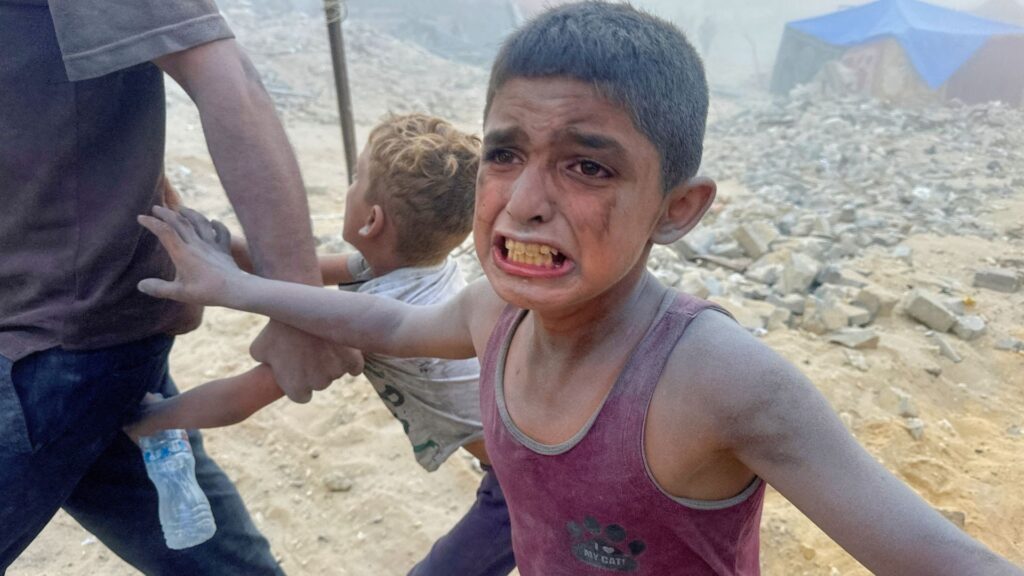
NewsFeed Violence, fear, displacement, hunger, loss and for 16,891 children in Gaza, death. These children are not numbers, they have a story, parents who loved them, grandparents who spoiled them and siblings who played with them. Their faces are now a memory etched in the hearts and minds of those who love them. Published On 9 Oct 20249 Oct 2024 Adblock test (Why?)
‘You can kill a revolutionary but…’: Lebanon envoy to India cites Mahatma Gandhi as Israel targets Hezbollah
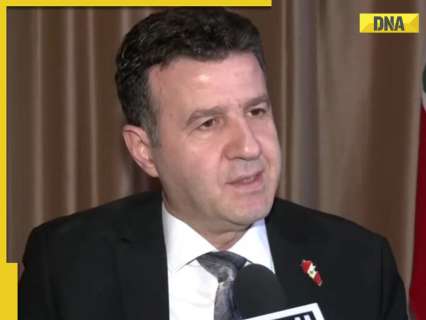
Lebanon’s Ambassador to India Rabie Narsh added that Hezbollah embodies a movement against the “rogue state” of Israel and cannot be crushed by eliminating its leaders.
From kissy-face sitdown on ‘The View’ to a tougher grilling on ‘60 Minutes,’ Kamala Harris is making news

It was a cringe-inducing moment. No one expected Kamala Harris to be grilled on “The View,” comprised of cheerleaders for her candidacy. But Whoopi Goldberg introduced her by bellowing “the next president of the United States,” it was a slap-your-forehead moment.” Seriously? The whole session yesterday was an in-kind contribution to the Harris campaign. KAMALA 2.0’S CHALLENGE? MAKING MORE NEWS, AND NOT JUST WITH ULTRA-FRIENDLY HOSTS I know, they’re not straight journalists, they’re liberal commentators slash entertainers. They read their questions verbatim off blue cards. That’s precisely why she wanted to do the show. There were some reasonable questions: How would her presidency differ from Joe Biden’s? How would she handle the border? Why wouldn’t Ron DeSantis take her calls about hurricane preparations with a Category 4 storm about to hit Florida? And then there was Joy Behar, who went on about Trump’s lies and asked how anyone could possibly support him. That enabled the Vice President to say Trump was all about personal grievances, not the voters. Kamala made good use of the forum, such as dishing on how she was working out and with her kids when Joe Biden called to say he was stepping aside. Bottom line: “The View,” an ABC program founded by Barbara Walters – it’s still in the news division – was even more embarrassing than I expected, with the ladies falling all over themselves to praise Harris and trash Trump. Some reasonable questions were asked, but Kamala ran circles around them and deflected what she didn’t want to answer while getting her familiar talking points in. It was a good forum for her, and for once she came prepared to make news. In a move earlier leaked to Politico, Harris made her pitch for having Medicare reimburse caring for the elderly at home instead of only in expensive institutions – the first new policy proposal she’s made in weeks. She said she would pay for it by demanding deeper discounts on certain drugs paid for by Medicare. Needless to say, she was not exactly cross-examined on the subject. WALZ-HARRIS WILL BE THE MOST ‘RADICAL’ ELECTED OFFICIALS THE WORLD HAS SEEN: COREY LEWANDOWSKI The ladies seemed awed that Kamala Harris was even there. It was a very different Kamala who appeared on a “60 Minutes” prime-time special aired the night before. To be sure, the news magazine show repeated some of her criticisms of Trump, with Bill Whitaker saying: “You have accused Donald Trump of using racist tropes when it comes to Haitian immigrants. In Springfield, Ohio. When it comes to birtherism, when it comes to Charlottesville, in fact, you have called him a racist and divisive, yet Donald Trump has the support of millions and millions of Americans.” The veep’s talking-point response: “I believe that the people of America want a leader who’s not trying to divide us and demean.” But Whitaker was a bulldog when it came to asking for followups again and again when the Democratic nominee offered generalities. When asked about the Committee for a Responsible Federal Budget saying her plan would add $3 trillion over the next decade – it was much higher for Trump – Harris talked about economists liking her plan and pivoted to praising small business. Whitaker’s response: “Pardon me, Madam Vice President. The question was, how are you going to pay for it?” This time, Harris said she’d make sure billionaires and big corporations would have to pay their “fair share,” and Whitaker expressed skepticism that Congress would approve that. This was the question that Harris hasn’t really had to answer. “Let me tell you what your critics and the columnists say, okay? They say that the reason so many voters don’t know you is that you have changed your position on so many things,” said Whitaker. “You were against fracking. Now you’re for it. You supported looser immigration policies, now you’re tightening them up. You are for Medicare for All. Now you’re not so many that people don’t truly know what you believe or what you stand for.” ’60 MINUTES’ DEFENDS HANDLING OF HUNTER BIDEN LAPTOP COVERAGE AS IT HITS TRUMP FOR SKIPPING INTERVIEW Harris offered this answer: “In the last four years I have been vice president, United States. And I have been traveling our country. And I have been listening to folks and seeking what is possible in terms of common ground. I believe in building consensus.” Translation: The world has changed and I have to be realistic about what I can get passed. The interview was so heavily edited that you could see the changes several times as Harris magically limited her answers to two sentences. That’s the overproduced “60 Minutes” style, but I think it was a mistake. CBS should have run the whole thing, or a major chunk of it, unedited. Scott Pelley said Trump had agreed to an interview but backed out with shifting explanations, including that there be no fact-checking. By yesterday afternoon, Kamala was taping her interview with Howard Stern, who loved Trump back in the day when they were rating women and has been totally opposed to him as a candidate and president. Reacting to Bob Woodward’s forthcoming book saying Trump secretly sent Vladimir Putin a COVID test machine during the pandemic – which the former president denies – the VP said: “I believe that Donald Trump has this desire to be a dictator. He admires strongmen and he gets played by them because he thinks that they’re his friends and they are manipulating him full-time and manipulating him by flattery and with favor… “This guy who is President of the United States is sending them to Russia? To a murderous dictator for his personal use?” CLICK HERE TO GET THE FOX NEWS APP Stern called it “maddening” and “insanity” that anyone would support Donald Trump. He told Harris he would vote for her, but could also vote for “that wall over there” over the ex-president. Harris is finally starting to make some news. Imagine
PM Modi launches all-out attack on Congress, calls it ‘parasitic party that…’
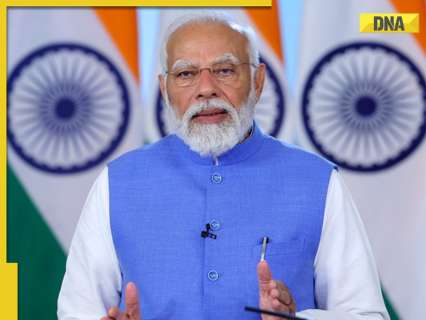
This comes after BJP won Haryana Assembly elections for the third consecutive term winning 48 out of the 90 seats while Congress won 37. BJP’s win broke exit poll predictions that signalled a clean sweep for Congress.
A sweet revenge: BJP orders 1 kg ‘Jalebi’ for Rahul Gandhi, Congress workers after mega Haryana win
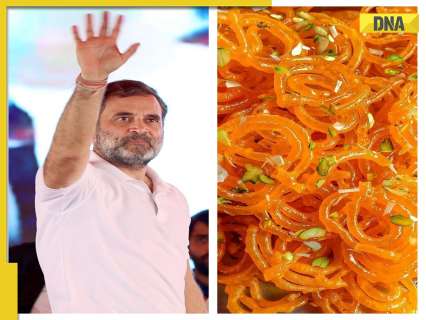
After a massive win in Haryana, the Bharatiya Janata Party (BJP) ordered one kg of Jalebi for Congress MP and LoP Rahul Gandhi, along with party workers.
Omar Abdullah’s BIG statement after winning J-K assembly polls, says ‘whoever becomes CM…’
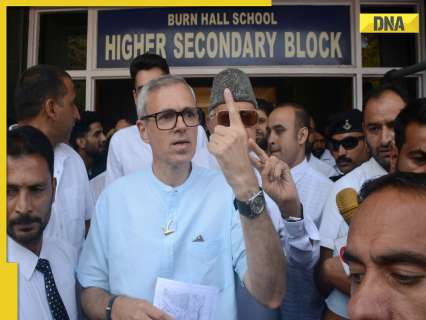
The National Conference-Congress alliance clinched an absolute majority in the Jammu and Kashmir Assembly elections, winning 48 seats in the 90-member assembly. The Congress clinched six seats and the BJP also put up a strong performance by winning 29 seats.
Brazil lifts ban on Elon Musk’s X platform

The platform formerly known as Twitter was suspended in Brazil, one of its largest markets, at the end of August. Brazil’s Supreme Court has lifted a ban on Elon Musk’s X after the platform was blocked amid a dispute over disinformation. “I authorise the immediate return of the activities” of X, Judge Alexandre de Moraes said in his ruling, after the company paid millions of dollars in fines for failing to comply with a series of court orders. He gave Brazil’s communications regulator 24 hours to make the platform accessible again. Musk, the world’s richest man and a self-declared “free speech absolutist“, has yet to react to the decision. Through its Global Affairs account, X said it was proud to return to Brazil, adding that it would “continue to defend freedom of speech, within the boundaries of the law” in the countries where it operates. The platform formerly known as Twitter was suspended in Brazil, one of its largest and most-coveted markets, at the end of August in a standoff over online disinformation related to Brazil’s 2022 election campaign. X had also failed to name a legal representative in the country, as required by law. After Moraes blocked X, Musk lashed out at the judge, calling him an “evil dictator” and dubbing him “Voldemort” after the villain from the Harry Potter series. Moraes, for his part, accused the platform of undermining democracy by allowing disinformation to flourish – a position backed by Brazilian President Luiz Inacio Lula da Silva, who declared that the state would not “be intimidated by individuals, companies or digital platforms that believe themselves to be above the law”. X eventually complied with all of Moraes’s demands in order to have the suspension lifted. Last week, the judge confirmed that the company had also settled fines amounting to about $5.2m. The Brazil dispute was one of a series of recent face-offs between Musk, and governments including Australia and the United Kingdom seeking to prevent the spread of online misinformation. X had 22 million users in Brazil before it was blocked. Adblock test (Why?)
Mexico’s security minister says beheaded mayor asked for no protection

The Mexican government has revealed new details in the grisly murder of a mayor, Alejandro Arcos, who was found decapitated over the weekend. Arcos’s murder came nearly a week after President Claudia Sheinbaum took office, ramping up pressure on her administration to tamp down on cartel-related violence in the country. On Tuesday, Security Minister Omar Garcia Harfuch told reporters that Arcos, a prominent opposition figure, had not requested any security escorts on the day of his killing. “The mayor was going to Petaquillas for a meeting alone,” Garcia Harfuch said, referring to a town in the coastal state of Guerrero. “We know that he was going to a specific meeting, he was not accompanied, communication was lost in the community, and the discovery [of his body] was made hours later.” When pressed by journalists, the minister emphasised that Arcos had approached neither the Ministry of Security nor the National Guard for assistance, despite reports that the mayor had told local media he wanted extra protection. Garcia Harfuch also underscored that the investigation into Arcos’s death was ongoing. “There is a lot of information on this subject that we must guard for the sake of the investigation,” he said. Mourners pay their respects during the funeral service for Alejandro Arcos on October 7 [Oscar Ramirez/Reuters] A week into office Arcos’s death comes less than a week after he took office on September 30 as mayor of Chilpancingo, Guerrero’s capital city. With its isolated mountains and temperate Pacific climate, Guerrero has long been a hub for the production of opium poppies, the key ingredient in heroin. As many as 16 drug-trafficking gangs operate in the state, vying for control over the lucrative region. The armed gangs have openly challenged the local government too, most prominently in 2023. When two alleged members of the Los Ardillos gang were arrested, thousands of protesters took to the streets on the gang’s behalf to push for their release. They clashed with National Guard members and police in Chilpancingo, even using an armoured vehicle to smash through the gates of the state legislature. Multiple officials were taken hostage during the unrest. Arcos was headed to meet members of the Los Ardillos gang on Sunday, the day of his death, according to Reforma, a Mexican news outlet. But images soon emerged on social media showing Arcos’s severed head perched atop what appeared to be his pick-up truck. It was the second time in less than a week that a member of the municipal government had been found dead. Just three days prior, Francisco Tapia, another newly minted member of the city government, was shot to death. Elections marred by violence On Tuesday, Garcia Harfuch revealed that four other mayors — from Guerrero and another state, Guanajuato — had appealed for protection following Arcos’s death. Mexico has long grappled with political violence, as cartels and other gangs seek to exert influence over government affairs. This year, the country held its largest election in history, with nearly 20,000 public offices up for grabs, including local, state and federal positions. But the proceedings were marred by violence: An estimated 37 candidates were killed in the lead-up to the vote, many of them seeking local office. In other cases, the relatives of candidates were killed, in apparent intimidation attempts. The violence forced some candidates from the race. Others were assigned National Guard members for protection. In the wake of Arcos’s death, public officials voiced frustration and anger at the ongoing violence. “I strongly condemn the murder of the Municipal President of Chilpancingo, Alejandro Arcos Catalán,” Guerrero Governor Evelyn Salgado Pineda wrote on social media. “His loss grieves the entire Guerrero society and fills us with indignation.” Alejandro Moreno, the head of Arcos’s conservative-leaning party, the Institutional Revolutionary Party (PRI), said on Monday, “We will not allow his death to go unpunished.” Secretary of Security and Citizen Protection Omar Garcia Harfuch speaks alongside President Claudia Sheinbaum at the unveiling of her security strategy on October 8 [Henry Romero/Reuters] Sheinbaum’s security strategy As government officials grappled with the fallout from Arcos’s death on Tuesday, President Sheinbaum — herself inaugurated on September 30 — revealed her proposals to bolster Mexico’s security. A member of the left-leaning Morena Party, she ruled out a return to hardline tactics. “The war on drugs will not return,” she said, citing a controversial United States-led initiative. Sheinbaum echoed her predecessor, the popular Morena leader Andres Manuel Lopez Obrador, in calling for measures that address the root causes of crime, like poverty. She also asserted that her government would not resort to excessive force to tackle crime. Mexico’s military and law enforcement have long been accused of committing extrajudicial killings — and even collaborating with the cartels. “We are not looking for extrajudicial executions, which is what was happening before,” Sheinbaum said. “What are we going to use? Prevention, attention to the causes, intelligence and [law enforcement] presence.” Lopez Obrador, Sheinbaum’s political mentor, had been criticised for his “hugs, not bullets” approach to tackling crime — something Sheinbaum herself was accused of embracing on the campaign trail. Adblock test (Why?)
